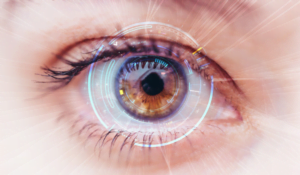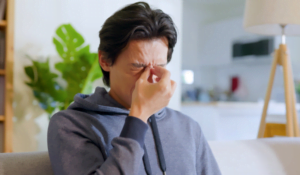
You are not alone if you frequently experience dry, itchy, or irritated eyes. Millions of people throughout the world struggle with the ubiquitous issue of dry eyes. Reduced tear production can be caused by a variety of conditions, including autoimmune diseases, aging, medicines, and vitamin deficiencies. Our modern lifestyle, particularly spending extended periods of time in front of computer screens, is one of the most common causes of dry eye symptoms and amnesia to blink.
Knowing about Dry Eye
Typically, inadequate tear production leads to reflex tearing and excessive tear production, which is the main cause of dry eye. These tears are essential for preserving the eye’s lubrication and hydration while also protecting it from infections.
Symptoms of Dry Eye Management
There are some doable steps you can take to relieve your discomfort if you have dry eyes. Start by limiting your exposure to dusty and windy situations. Wear sunglasses or goggles outside to protect your eyes from possible irritants.
Lubricating Ointments and Artificial Tears
Artificial tears or lubricating creams can help keep your eyes moist and relieve the symptoms of dry eye. Regular use might provide about much-needed relief.
Take Omega-3 Fatty Acids On Board
Increased consumption of omega-3 fatty acids, which can be obtained as supplements or found in fish, can help reduce inflammation and improve tear production. Your diet’s inclusion of these beneficial fats can make a major difference in how healthy your eyes are.
The Beneficial Effects of Sleep
A restful night’s sleep is essential for general health and is also critical for preventing dry eyes. Tear production is more effective when you’re sleeping, ensuring optimal eye lubrication and hydration. Contrarily, a lack of sleep can cause a reduction in tear production, leaving the eyes more prone to dryness and discomfort. Furthermore, getting enough sleep helps to lower stress, which itself can worsen the symptoms of dry eyes.
Expertise of Optometrists
Consulting with an optometrist is crucial for thorough advice and a personalized treatment plan to effectively combat dry eyes. Their knowledge can handle your unique demands and guide you toward the best options.
Conclusion
Simple treatments are available for the common problem of dry eyes. You can get a lot of relief from dry eye symptoms by being proactive about protecting your eyes, using artificial tears or lubricating ointments, adding omega-3 fatty acids to your diet, and emphasizing getting enough sleep. Consult an optometrist for individualized care, and make sure your eyes are well-hydrated and healthy.
Frequently asked questions
While some of the underlying reasons of dry eye can be effectively treated, other disorders might need ongoing care. However, most people may significantly reduce their symptoms of dry eye with the right care and treatments.
No, artificial tears are available in a variety of formulas, both for mild cases of dry eye and for more severe ones. To find out which kind is best for you, speak with your optometrist.
Each person has a different time frame for progress. While some people may see relief within a few weeks, others might need to consistently take omega-3 supplements for several months before seeing any real results.
Severe dry eye may potentially harm the cornea and other ocular components if ignored for an extended length of time, impairing vision. To avoid such difficulties, you must get treatment as soon as possible and abide by your optometrist’s recommendations.
The number of visits is determined by the severity of your dry eye condition and the treatment strategy that your optometrist has recommended. Many people should get routine checkups every few months or as prescribed by their optometrist.





Recent Articles:

Alleviating Digital Eye Strain: Tips for Screen Users

The Truth About Seeing in the Dark

The Myth of Green Improving Eyesight

The Dangers of Looking Directly at the Sun

The Risks of Using Smartphones in the Dark on Eye Health

An Examination of Visual Phenomena for “Ghost Images”




